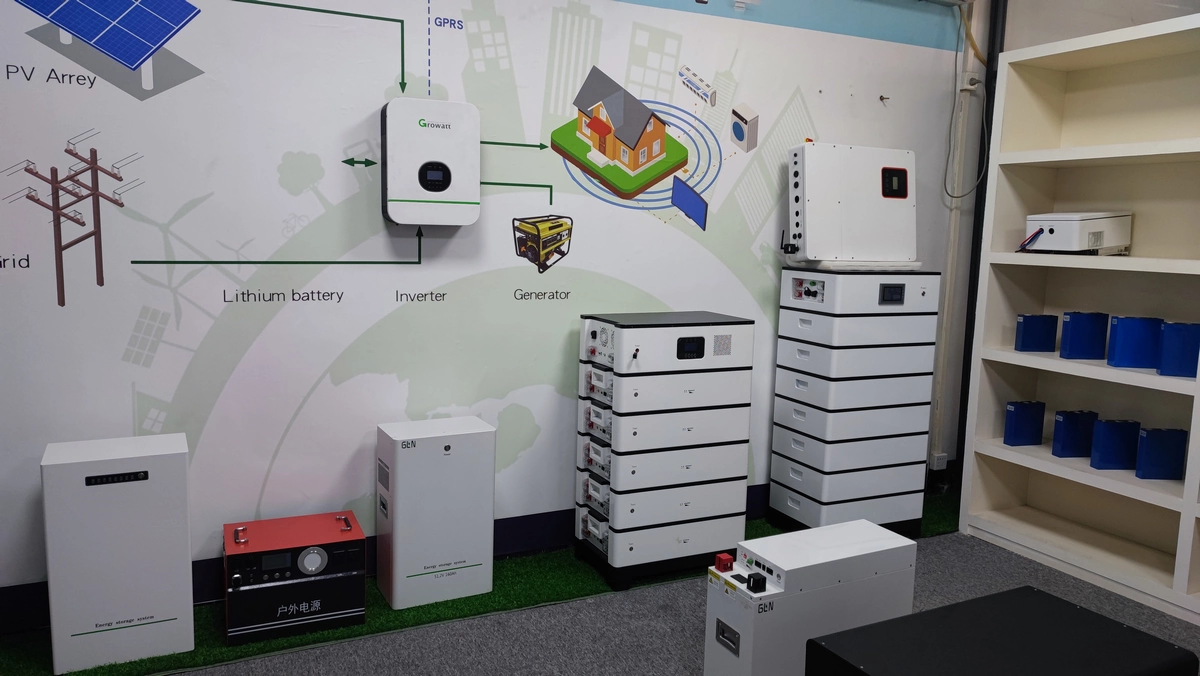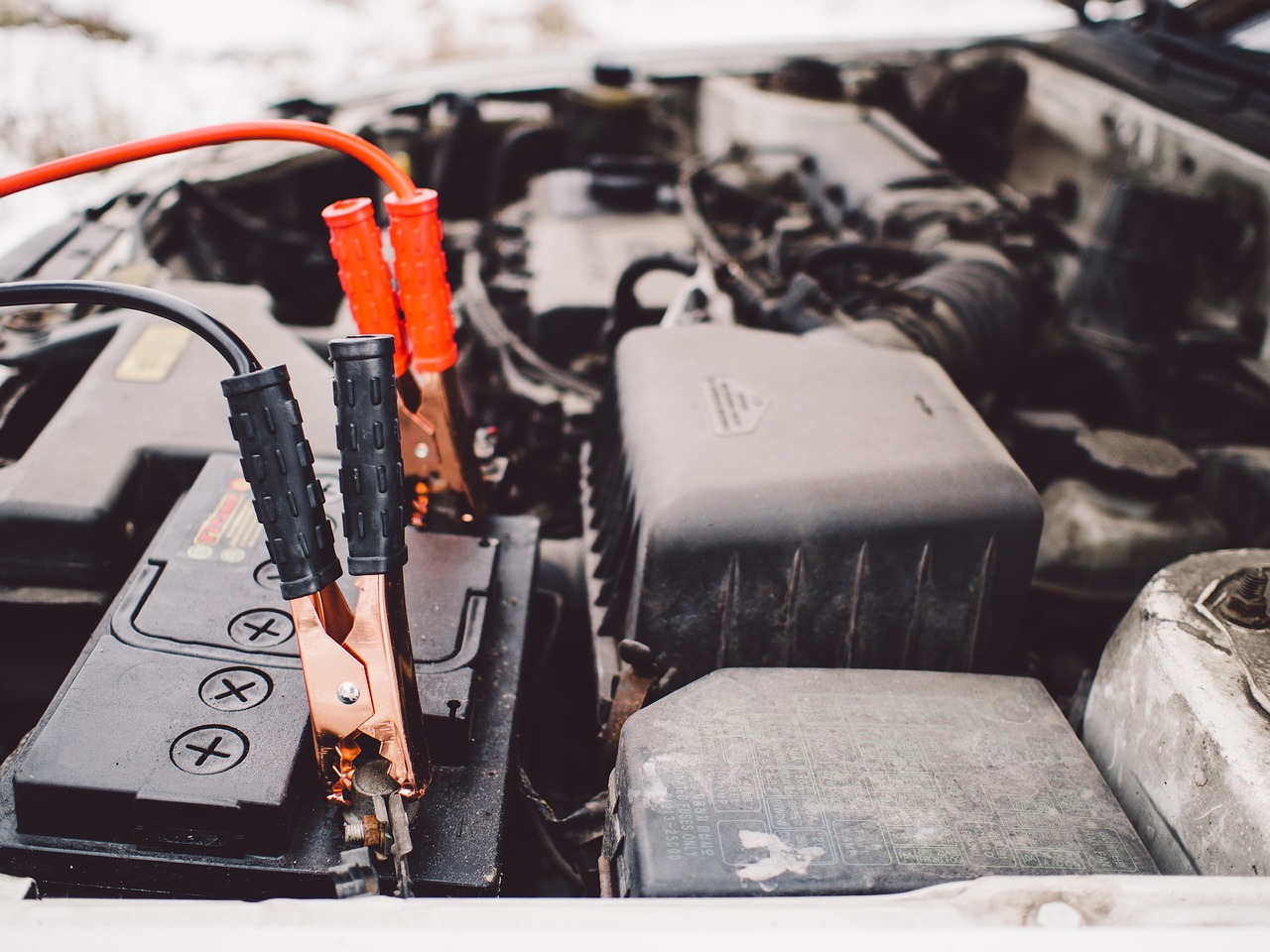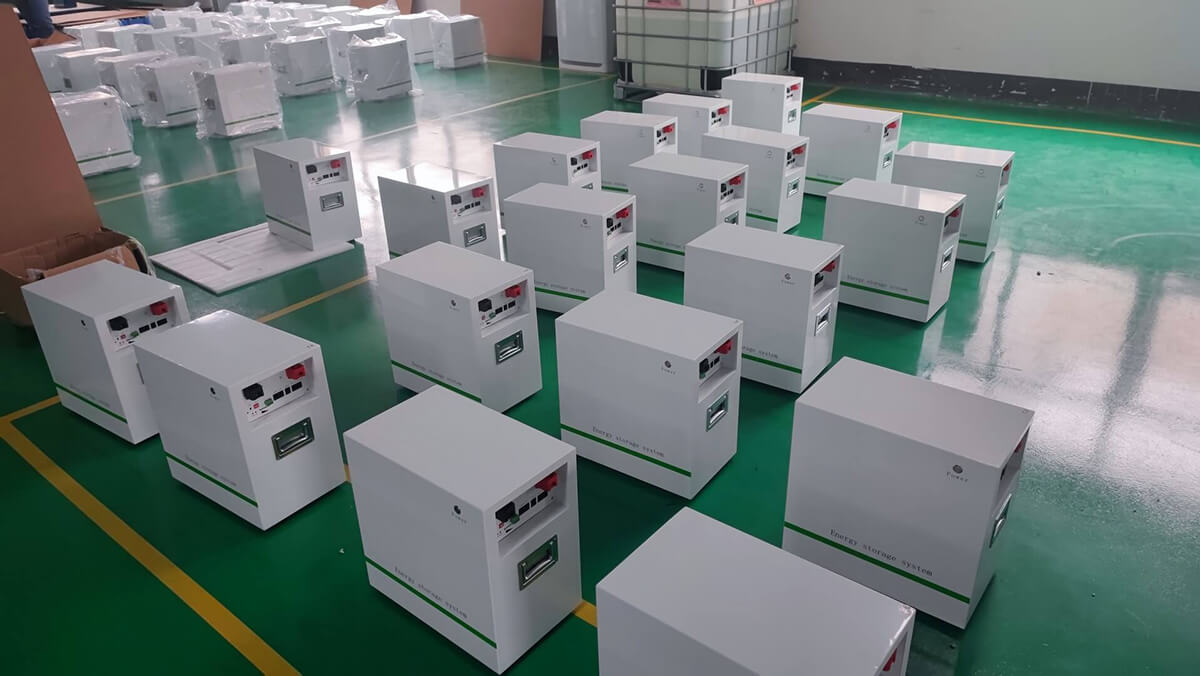Lithium iron phosphate (LiFePO4) batteries have become increasingly popular in recent years as a reliable and efficient energy storage solution. Their long lifespan and high performance make them an ideal choice for a wide range of applications, from electric vehicles and solar power systems to home energy storage and backup power. In this guide, we'll dive deep into the topic of LiFePO4 battery lifespan, exploring what it is, how it can be maximized, and what factors can affect its durability and efficiency.
Understanding LiFePO4 Battery Lifespan
LiFePO4 batteries, also known as lithium iron phosphate batteries, have gained popularity in recent years due to their numerous advantages over other battery chemistries. One of the most significant factors that set LiFePO4 batteries apart is their lifespan. In this section, we will delve into what LiFePO4 battery lifespan means, why it is essential, and the science behind it.

1.1 What is LiFePO4 Battery Lifespan and Why is it Important?
The lifespan of LiFePO4 battery refers to the period that a battery can retain its capacity to hold a charge and deliver power. It is a critical factor in determining the longevity and overall performance of a battery. The lifespan of a battery is also an important consideration when it comes to calculating the total cost of ownership (TCO) of a battery system.
The longer the lifespan of a battery, the fewer replacements it will require, ultimately lowering the TCO of the system. Hence, understanding the lifespan of LiFePO4 batteries is crucial for making informed decisions on battery usage, maintenance, and replacement.
1.2 The Science Behind LiFePO4 Battery Chemistry and its Impact on Lifespan
To understand the science behind the lifespan of LiFePO4 batteries, we must first look at the chemistry that makes them work. LiFePO4 batteries utilize lithium iron phosphate as their cathode material, which is highly stable and non-reactive. The anode is typically made of carbon or graphite, and the electrolyte is a lithium salt dissolved in an organic solvent.
One of the reasons why LiFePO4 batteries have a long lifespan is due to their inherent stability. Unlike other lithium-ion battery chemistries, LiFePO4 batteries are less prone to thermal runaway, a phenomenon that can cause a battery to catch fire or explode. This stability is due to the robust structure of the lithium iron phosphate cathode material, which is resistant to thermal decomposition, making LiFePO4 batteries much safer to use.
Another reason why LiFePO4 batteries have a long lifespan is their high cycle life. A cycle in a battery's lifespan refers to a full discharge and recharge of the battery. LiFePO4 batteries can withstand thousands of cycles without significant degradation in capacity. The high cycle life of LiFePO4 batteries is due to the reversible reaction that occurs during charging and discharging, where lithium ions move back and forth between the cathode and anode, without damaging the cathode material.
1.3 Typical Lifespan Ranges for LiFePO4 Batteries and How They Compare to Other Battery Chemistries
The lifespan of a LiFePO4 battery can vary depending on several factors, such as temperature, depth of discharge, and charging current. Typically, a well-maintained LiFePO4 battery can last between 2,000 to 5,000 cycles or more, which is equivalent to 10 to 20 years of use, depending on the application.
Compared to other battery chemistries such as lead-acid, NiMH, and other lithium-ion batteries, LiFePO4 batteries have a much longer lifespan. For instance, a lead-acid battery typically lasts between 500 to 800 cycles, whereas a NiMH battery can last between 500 to 1,000 cycles. Other lithium-ion batteries, such as LiCoO2 or LiMn2O4, have a shorter lifespan than LiFePO4 batteries due to their lower stability and lower cycle life.

Factors Affecting LiFePO4 Battery Lifespan
The key factors that affect the lifespan of a LiFePO4 battery can be broadly divided into two categories: external factors and internal factors.
External factors refer to the operating conditions of the battery, including temperature, charging and discharging rate, depth of discharge, and cycle life. These factors can significantly impact the lifespan of a LiFePO4 battery.
Temperature:
Temperature is one of the most important factors affecting the lifespan of LiFePO4 batteries. High temperatures can significantly reduce the battery's lifespan, while low temperatures can reduce its performance. The optimal operating temperature range for LiFePO4 batteries is between 0°C and 45°C (32°F and 113°F). Outside this range, the battery's performance can be affected, and its lifespan may be shortened.
If LiFePO4 batteries are exposed to high temperatures for prolonged periods, the internal components can degrade faster, leading to a shorter lifespan. On the other hand, low temperatures can cause the battery's chemical reaction to slow down, reducing its performance and overall capacity.
Charging and discharging rates:
The charging and discharging rates can also affect the lifespan of LiFePO4 batteries. Charging the battery too quickly or too slowly can reduce its lifespan, as can discharging it too quickly.
Fast charging can cause the battery's temperature to rise, which can lead to a shorter lifespan. Slow charging, on the other hand, can cause the battery's voltage to drop below its safe operating range, which can also reduce its lifespan. Similarly, discharging the battery too quickly can lead to a shorter lifespan, as the battery's internal components may degrade faster.
Depth of discharge:
The depth of discharge (DOD) is the percentage of the battery's capacity that is discharged during use. It’s another crucial factor that can impact the lifespan of a LiFePO4 battery. The higher the DOD, the more the battery is discharged, and the shorter its lifespan. LiFePO4 batteries typically have a longer lifespan if they are not discharged completely but are instead kept at a state of charge (SOC) between 20-80%. Keeping the battery within this SOC range can help to reduce the stress on the battery and extend its overall lifespan.
Over-discharging a LiFePO4 battery can cause irreversible damage to the cells, leading to a shorter lifespan. Therefore, it is important to prevent over-discharging by using battery management systems (BMS) that can monitor the battery's voltage and current and prevent over-discharging.

Cycle Life:
The cycle life of a LiFePO4 battery refers to the number of charge/discharge cycles it can undergo before its capacity begins to degrade significantly. LiFePO4 batteries typically have a longer cycle life than other battery chemistries, such as lead-acid batteries. However, the number of cycles can still be impacted by factors such as temperature and DOD.
Internal factors refer to the construction and chemistry of the battery itself, including the quality of the materials used, the design of the electrodes and separators, and the overall manufacturing process.
Quality of materials: The quality of the materials used in the construction of a LiFePO4 battery can have a significant impact on its lifespan. Higher-quality materials typically result in more stable battery chemistry, which can lead to a longer lifespan.
Design of electrodes and separators: The design of the electrodes and separators within a LiFePO4 battery can also impact its lifespan. Proper design can help prevent internal short circuits and ensure that the battery remains balanced during charge/discharge cycles.
Manufacturing process: The manufacturing process of a LiFePO4 battery can impact its overall quality and lifespan. Proper manufacturing techniques can ensure that the battery is free of defects and that the materials are properly assembled.
Other factors:
Other environmental factors can also affect the lifespan of LiFePO4 batteries. Exposure to high humidity can lead to corrosion and damage to the battery's internal components. Vibration and shock can also cause damage to the battery's internal components, leading to a shorter lifespan.
Overall, LiFePO4 batteries have a longer lifespan than other battery chemistries, but their lifespan can still be affected by various factors. By understanding these factors and taking steps to prevent damage and maintain the battery properly, users can maximize the lifespan of their LiFePO4 batteries and get the most out of their investment.

How to Maximize LiFePO4 Battery Lifespan
Now that we've discussed the factors that can affect LiFePO4 battery lifespan, let's explore some best practices and tips for maximizing the lifespan of LiFePO4 batteries.
3.1 Best practices for charging and discharging LiFePO4 batteries:
LiFePO4 batteries have a recommended charge voltage of around 3.6-3.7V per cell, and a discharge voltage of around 2.5-2.8V per cell. It's important to avoid overcharging or over-discharging the battery, as this can lead to premature wear and reduced lifespan. To prevent over-discharging, consider using a BMS that will shut off the battery once it reaches a certain voltage level.
When charging a LiFePO4 battery, it's best to use a charger designed specifically for this chemistry, as other types of chargers may not be able to properly detect the battery's state of charge. Additionally, it's recommended to charge the battery at a moderate rate of around 0.5C, which is the battery's capacity divided by 2 (for example, a 100Ah battery would be charged at 50A).
3.2 Tips for maintaining and storing LiFePO4 batteries:
To maintain your LiFePO4 battery's performance and extend its lifespan, it's important to store and handle it properly. Keep the battery in a cool, dry place with a temperature range of around 20-25°C (68-77°F), and avoid exposing it to extreme temperatures or direct sunlight.
When storing the battery for an extended period of time, it's best to charge it to around 50-60% of its capacity and then disconnect it from any load or charger. This will help prevent over-discharging and ensure the battery is ready to use when you need it.

3.3 The role of battery management systems (BMS) in prolonging LiFePO4 battery lifespan:
A BMS is a critical component of any LiFePO4 battery system, as it helps to monitor the battery's state of charge, voltage, and temperature. By preventing overcharging or over-discharging, a BMS can significantly extend the lifespan of a LiFePO4 battery. Additionally, some BMS models come with additional features such as cell balancing, which helps to ensure that each cell in the battery is charged and discharged evenly.
3.4 Advanced strategies for maximizing LiFePO4 battery lifespan:
If you need to use a large amount of power over an extended period of time, consider using multiple LiFePO4 batteries in parallel or series. Connecting batteries in parallel increases their overall capacity, while connecting them in series increases their overall voltage. However, it's important to make sure that the batteries are properly balanced and have similar characteristics to prevent any issues.
By following these tips and best practices, you can help to maximize the lifespan of your LiFePO4 battery and ensure that it performs reliably for years to come.

Applications and Industries for LiFePO4 Batteries
LiFePO4 batteries are widely used in various applications and industries due to their unique properties and advantages over other battery chemistries. In this section, we will discuss the different applications and industries that benefit from LiFePO4 batteries.
Automotive Industry: LiFePO4 batteries are increasingly being used in electric vehicles due to their higher energy density and longer lifespan. They also have a lower risk of thermal runaway and are more resistant to extreme temperatures compared to other battery chemistries. LiFePO4 batteries are also used in hybrid vehicles, where they provide power for starting and stopping the engine.
Marine Industry: LiFePO4 batteries are an ideal choice for marine applications due to their resistance to corrosion, vibration, and shock. They are commonly used for electric propulsion, as well as for lighting, navigation, and other auxiliary power applications on boats and yachts.
Renewable Energy: LiFePO4 batteries are well-suited for renewable energy systems, such as solar and wind power, due to their ability to store and release energy efficiently. They can also be used in off-grid and remote power systems, where access to reliable power is limited.
Emergency Backup Power: LiFePO4 batteries are increasingly being used as backup power sources for critical applications, such as hospitals, data centers, and emergency services. They provide a reliable source of power during outages and can be used in conjunction with renewable energy systems to create a more sustainable backup power solution.
Real-world examples of LiFePO4 battery installations can be seen in various industries, such as the following:
The North American Eagle land-speed record team used LiFePO4 batteries to power their vehicle, achieving a top speed of 633 mph.
A solar-powered microgrid in South Australia uses LiFePO4 batteries to store excess energy generated by solar panels, providing power to the local community.
The French Navy uses LiFePO4 batteries in its submarines for emergency backup power.
Overall, the use of LiFePO4 batteries in these and other applications has led to significant improvements in energy efficiency, cost savings, and environmental sustainability.

Related Articles:
lifepo4 battery temperature range
Harveypower LiFePO4 Batteries: Superior Lifespan for Your Energy Needs
Harveypower is a leading manufacturer of high-quality LiFePO4 batteries, providing customers with superior lifespan, energy efficiency, and cost savings. Our LiFePO4 batteries are designed to deliver exceptional performance, reliability, and safety, making them the ideal choice for a wide range of energy applications.
One of the key advantages of Harveypower's LiFePO4 batteries is their exceptional lifespan. Unlike other battery chemistries that typically have a lifespan of 500-1000 cycles, our LiFePO4 batteries can last up to 5000 cycles or more, depending on usage and maintenance. This means that Harveypower's LiFePO4 batteries can last up to 10 times longer than lead-acid batteries and 2-3 times longer than other lithium-ion batteries.
In addition to their superior lifespan, Harveypower's LiFePO4 batteries are also highly efficient and reliable. They offer a high energy density and a stable voltage output throughout their lifespan, which means that they can deliver consistent power to your application, without experiencing voltage sag or performance degradation over time. This makes them an excellent choice for applications that require high power output and long runtime, such as electric vehicles, solar power systems, and backup power systems.
At Harveypower, we understand that different energy applications have different requirements and challenges. That's why we offer a wide range of LiFePO4 battery products, tailored to meet the specific needs of our customers. Whether you need a small, lightweight battery for portable applications or a large, high-capacity battery for industrial or commercial use, we have a product that can meet your needs.
Our LiFePO4 batteries are also designed with safety in mind. They are equipped with advanced battery management systems (BMS) that provide real-time monitoring of battery performance, temperature, and other critical parameters. This ensures that the battery is operating within safe limits and can help prevent accidents and damage to the battery.
In conclusion, if you are looking for a high-quality, long-lasting, and reliable energy storage solution for your application, Harveypower's LiFePO4 batteries are a perfect choice. With their superior lifespan, energy efficiency, and safety features, they can help you maximize your energy savings, reduce your maintenance costs, and improve your overall energy performance.
